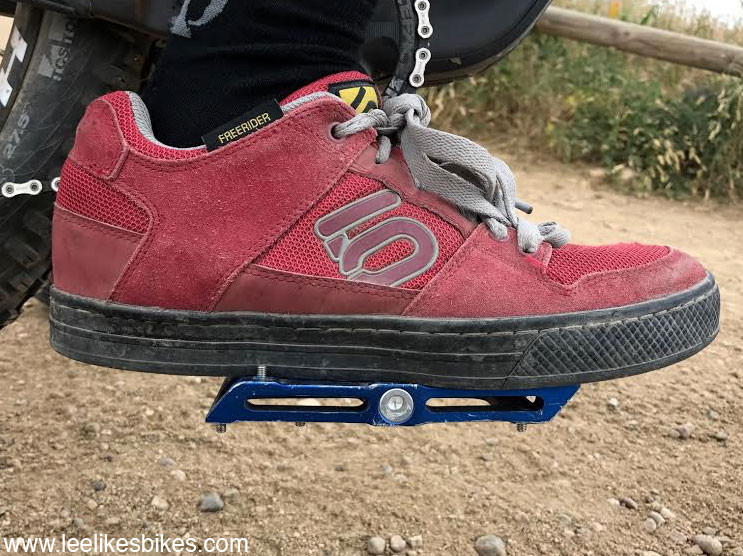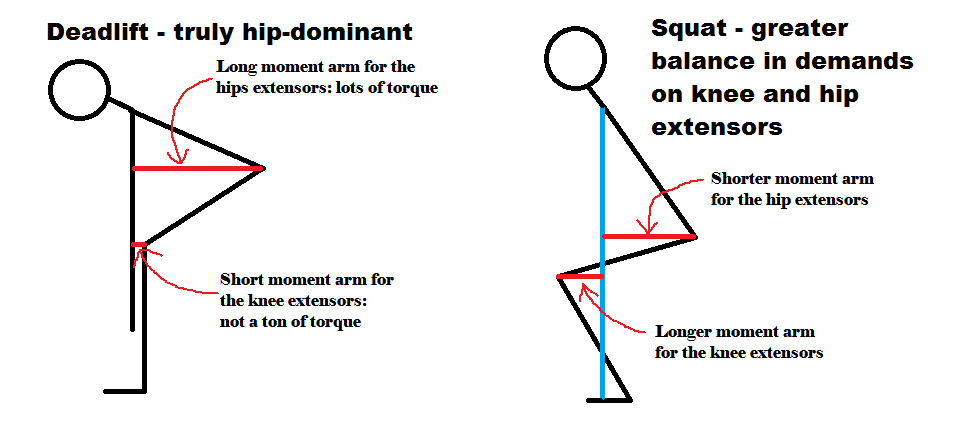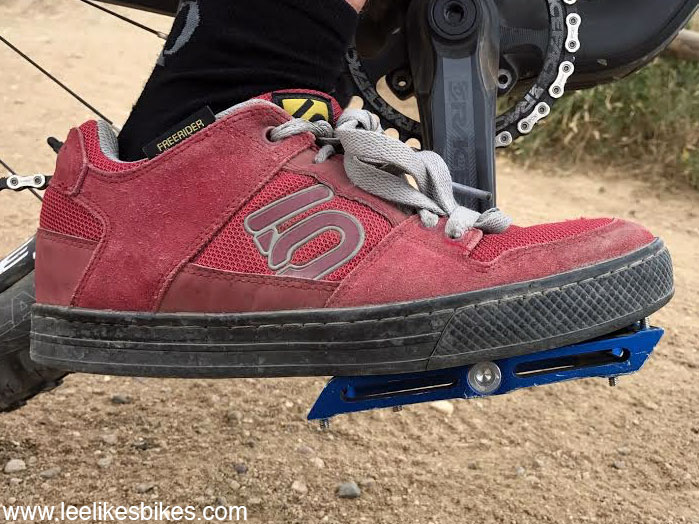Foot placement and body position

The other day I was working with a client on the big pump track at Valmont Bike Park, and we were having trouble getting him into a proper hinge. His form was perfect on the RipRow, but on the bike he was collapsing into the classic bad squat position: knees forward, butt forward, quads hot, glutes cold, shoulders high. As a result, his pumping was choppy and weak.
This guy was moving great off the bike. On the bike … not so well. I see that every day in classes, but I can usually fix the issues quickly. This was … different.
Then I noticed how his feet were on his pedals.
He was riding a flat pedal with a long body, and the arches of his feet were on the pedal spindles. People call this a “mid-foot” pedal position. It’s a thing: You can look it up.

Mid-foot pedal position: arch of foot on the pedal spindle.
This made me wonder a few things.
But first some background

Image is from Everything you think is wrong with your deadlift is probably right
In a squat movement:
• Your knees move forward relative to your base of support (your foot).
• Your hips drop downward.
• This puts more work on your quads. Do your quads burn on long downhills? Yep, I knew it. You’re probably squatting on your bike.
• Because the saddle limits how low you can squat, your shoulders stay high. High shoulders = straight arms = trail trauma.
When we ride we should not squat! Instead, we should hinge:
In a hinge (or deadlift) movement:
• Your knees stay over the back of your base of support (your foot). In a Romanian deadlift, your knees are above your heels. In a classic, more powerful deadlift, your knees are above the middle of your foot. They are never farther forward than this. Never.
• Your hips rotate backward and downward. They stay higher than in a squat.
• This puts more work in your glutes. Most of us are way stronger in a deadlift than in a squat.
• Your shoulders get low. This gives you tons of arm range for shredding.
Great riding happens in a hinge, not a squat.
Learn more about squatting vs. hinging:
Back to what I was wondering
1. This rider’s balance was great. Heavy feet, light hands. This means his center of mass was in a pretty much fixed position relative to his bottom bracket.
2. If your COG is in one position, and you shift your feet backward so the balls of your feet are on the pedals, would that place your knees farther back relative to your base of support? On the bike, your base is your cranks. The middle of that base is your bottom bracket. Would moving your feet backward move your knees backward — ideally over your bottom bracket?
3. Will moving the knees backward create a better hinge? Will this help the rider get more power out of his glutes? Will this give him more speed and control on the pump track?

Ball of foot on the pedal spindle. I consider this to be normal and effective.
YES!
It totally worked. When he put the balls of his feet on the pedal spindles, his hinge snapped to perfect, and he pumped the track smoothly and powerfully. As he said, “This feels more natural, more athletic.”
If you’re having trouble with your hinge, and you’re riding with a mid-foot pedal position, try putting the balls of your feet on your pedals, and see if that helps you.
Learn way more at the LLB MTB School: www.llbmtb.com
Have fun out there,
Lee
Know more. Have more fun!
Join the leelikesbikes mailing list:

Leave a Reply
Want to join the discussion?Feel free to contribute!